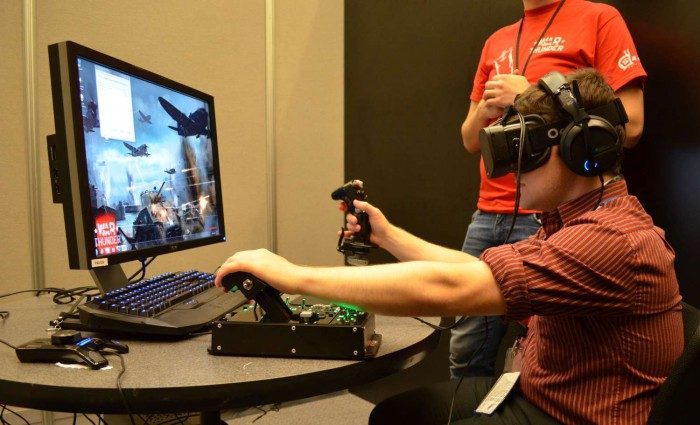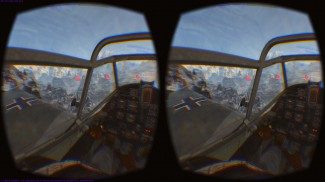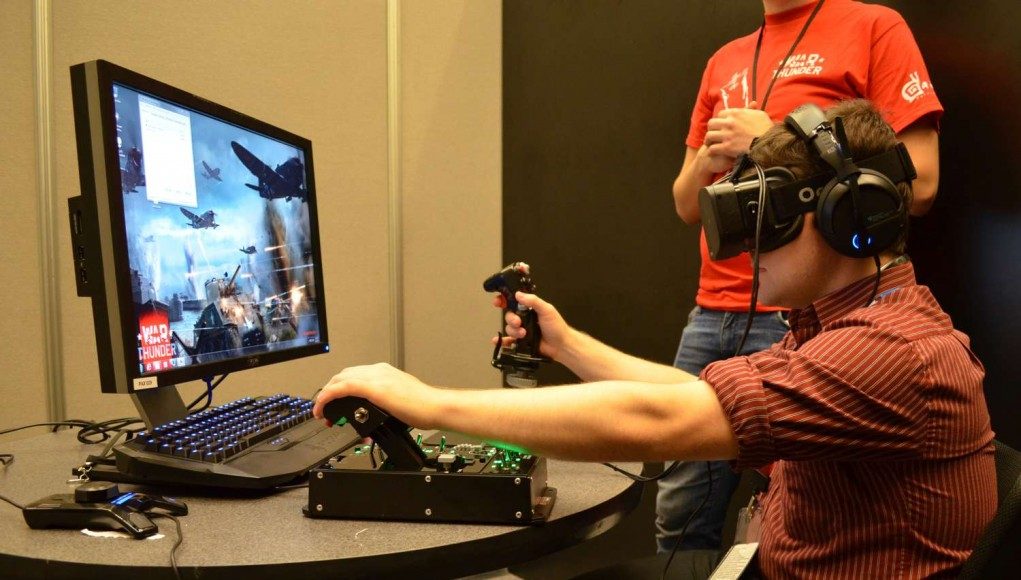 War Thunder (2012), the popular WWII-era multiplayer flight combat game, has had support for the Oculus Rift DK1 since 2013. A patch yesterday updated the game to work with the Oculus Rift DK2. And while there is great potential for the DK2’s features within the game, there’s still much to be done to make this a comfortable VR experience.
War Thunder (2012), the popular WWII-era multiplayer flight combat game, has had support for the Oculus Rift DK1 since 2013. A patch yesterday updated the game to work with the Oculus Rift DK2. And while there is great potential for the DK2’s features within the game, there’s still much to be done to make this a comfortable VR experience.
Update 1.41.29.50 on July 31st brought the first round of Oculus Rift DK2 support to War Thunder; technically, you could say the game works with the DK2. To enable it, set your Rift to Extended Mode. In the War Thunder launcher, hit the gear icon next to the Graphics settings—at the bottom, check the box that says ‘Oculus Rift’. With the DK2 set as the secondary monitor, War Thunder should automatically launch inside of it. Don your Rift and get to playing.
So yes, it works, but at this point it isn’t a great experience due to four major issues:
Latency
Running on a system with the Nvidia GTX 670, a Core i7-3820, and 16GB of RAM, the head tracking latency was significant, even while the framerate was solid. Turning the game down to its lowest settings didn’t seem to make much different in the latency, which leads me to believe that the developer, Gaijin Games, has much optimization to be done if they want this to be a serious DK2 game.
Projection
 The in-cockpit view (press V to toggle views, C to recenter Rift) is the only one in the game that looks reasonably correct. All of the other views (including the background terrain of menu screens) have a strange zoomed feeling to them, making it feel like your eyes are zooming in on the world. When turning left and right, this leads to significant warping of the world and plenty of visual discomfort. Inside the cockpit looks decent, but when tilting my head left and right, it’s easy to see the image skew (where vertical lines become diagonal). This leads me to believe that War Thunder is not properly projecting the image for the Rift which may be due to imporer implementation of the Oculus SDK.
The in-cockpit view (press V to toggle views, C to recenter Rift) is the only one in the game that looks reasonably correct. All of the other views (including the background terrain of menu screens) have a strange zoomed feeling to them, making it feel like your eyes are zooming in on the world. When turning left and right, this leads to significant warping of the world and plenty of visual discomfort. Inside the cockpit looks decent, but when tilting my head left and right, it’s easy to see the image skew (where vertical lines become diagonal). This leads me to believe that War Thunder is not properly projecting the image for the Rift which may be due to imporer implementation of the Oculus SDK.
There also may be an issue with the IPD setting. It isn’t clear whether or not War Thunder is reading the IPD data from the Oculus Configuration Utility. During my time in War Thunder with the DK2, my eyes seemed to have some trouble converging properly on the menus and text.
Lack of Positional Tracking
One of the biggest disappointments is the lack of positional tracking. Essentially the DK2’s most obvious improvement over the DK1—there’s an argument to be made for not claiming “DK2 support” if you don’t have positional tracking. Oddly enough, the DK2’s camera light does illuminate while playing, but it doesn’t seem to be utilized. This is a real shame because twisting around in the cockpit to see enemies above or behind you is one of the coolest and most immersive aspects of using the Oculus Rift with War Thunder. You can turn around, but your head pivots around one point in space, not accurately reflecting the movement of your head upon your shoulders. Positional tracking would also be tremendously useful for ducking your gaze around beams in the cockpit to spot enemy aircraft—as that’s exactly what you’d do in real life if a beam was obstructing your view. I tired to do this on a few occasions and was disappointed when it didn’t work.
In my brief test, it didn’t even look like War Thunder was using the ‘neck model’, a facet of the DK1’s implementation which simulated some very limited positional movement by approximating the movements of the eyes relative to the shoulders using known constraints of neck movement. Without positional tracking or even the neck model, the game is rotating the camera around a single point in space, which leads to a very inaccurate sense of motion.
Legibility
All other problems aside, I was surprised how hard it was to read War Thunder’s menus using the DK2. The jump in resolution over the DK1 has made every other DK2 demo I’ve looked at significantly more detailed and more legible. The text size in War Thunder is big enough that I would expect to be able to read it, but there seems to be significant aliasing around the edges of text which makes it very hard to resolve the individual letters.
 Sure, it’s early times for the DK2. The Oculus SDK 0.4.0 beta just came out and it isn’t perfect. But War Thunder’s hasty implementation doesn’t instill much confidence that the developer cares about getting it right. The reason this is so disappointing is because of how amazing War Thunder could be as a high quality virtual reality experience. The many improvements of the DK2 could play to War Thunder very well—positional tracking movement in the cockpit for sighting enemy aircraft is an extremely compelling proposition and it’s a shame we don’t have it yet.
Sure, it’s early times for the DK2. The Oculus SDK 0.4.0 beta just came out and it isn’t perfect. But War Thunder’s hasty implementation doesn’t instill much confidence that the developer cares about getting it right. The reason this is so disappointing is because of how amazing War Thunder could be as a high quality virtual reality experience. The many improvements of the DK2 could play to War Thunder very well—positional tracking movement in the cockpit for sighting enemy aircraft is an extremely compelling proposition and it’s a shame we don’t have it yet.
As Oculus VR Software Architect, Tom Forsyth, hammered home in his talk at GDC 2014, Developing VR Experiences with the Oculus Rift, developers need to “be kind to their players,” something we hope Gaijin Games will take to heart.







